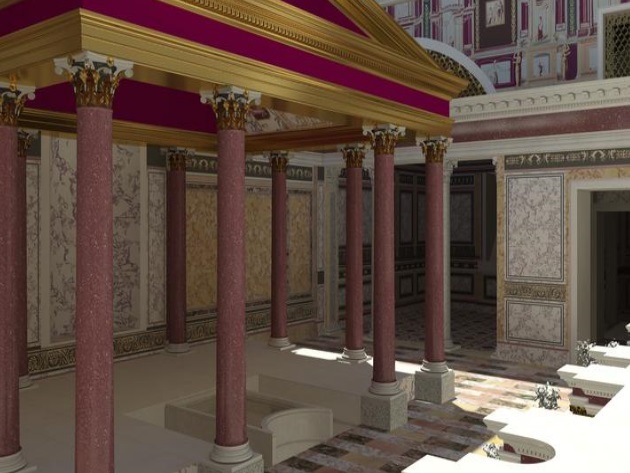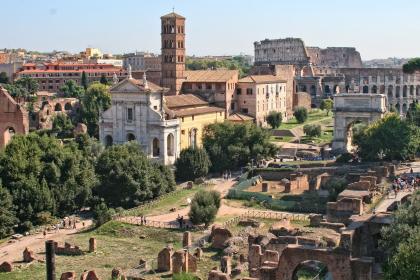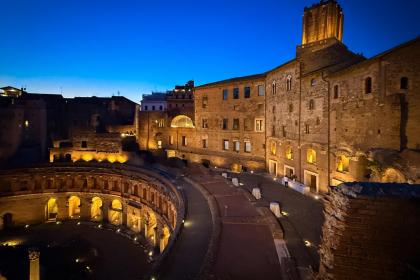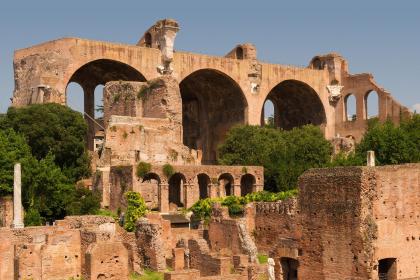
The Domus Transitoria, the first royal palace of Nero on the Palatine Hill, due to its value and the wealth of materials used, occupies a place of primary importance in the artistic history of Rome in antiquity.
Located in the central part of the hill, under the Domus Flavia from the time of Domitian, it allowed to "transit" from the Palatine to the Esquiline, and was followed, after the fire in 64 AD, by the Domus Aurea, of which it constitutes a direct anticipation for its architecture and for the splendor of the paintings, stuccoes and marbles that decorated its rooms.
Of the monumental complex are still recognizable some of the suggestive environments, including a space originally occupied by a rich nymphaeum with water features conceived as a large theatrical scene. On the pulpit, small niches, from which two thousand years ago the water gushed in sync with the waterfall of the nymphaeum, are adorned with polychrome marble columns. Opposite, intended for rest and leisure of the Emperor, is the triclinium, surrounded by porphyry columns and multicolored marble pillars, dominated today by the foundations of Domus Aurea.
Two rooms are also visible, decorated with precious wall paintings, stuccos and marble floors, partly preserved in the nearby Palatine Museum, where some frescoes from a barrel-vaulted room are exhibited: two large friezes and panels, attributable to Famulus or Fabullus, the painter of the Domus Aurea mentioned by Pliny.
Discovered in the eighteenth century by the Farnese Family and erroneously identified as the Baths of Livia, later investigated with scientific criteria and treated at the beginning of the twentieth century by Giacomo Boni, these environments have been the object of a long restoration and safety work in recent years.
Next to the pictorial decorations, the colored marbles of the pavement and wall coverings stand out, decorated with vegetal and geometric motifs, in the four species favored by the emperor Nerone: the red porphyry, the Greek green porphyry, the ancient yellow and the pavonazzetto coming from all over the Mediterranean basin (Greece, Egypt, Asia Minor).
The level of perfection culminates in the floor of the large three-nave hall under the Casina Farnese: perhaps the finest example of the sectilia pavimenta given back to us by Roman antiquity, certainly of Neronian age. The floor is partly covered by an oval fountain relevant to the large triclinium of the imperial palace built by Domitian, known as Coenatio lovis: an excellent example of the typical stratification of Ancient Roman construction modality.
Parco Archeologico del Colosseo

 Condividi
Condividi
Museo Palatino
 Condividi
Condividi
The Trajan's Markets - The Museum of the Imperial Fora

 Condividi
Condividi
Basilica of Maxentius

 Condividi
Condividi
Information
Temporarely closed.
 Condividi
Condividi
Location
To find out about all accessibility services, visit the Rome accessible section.











































